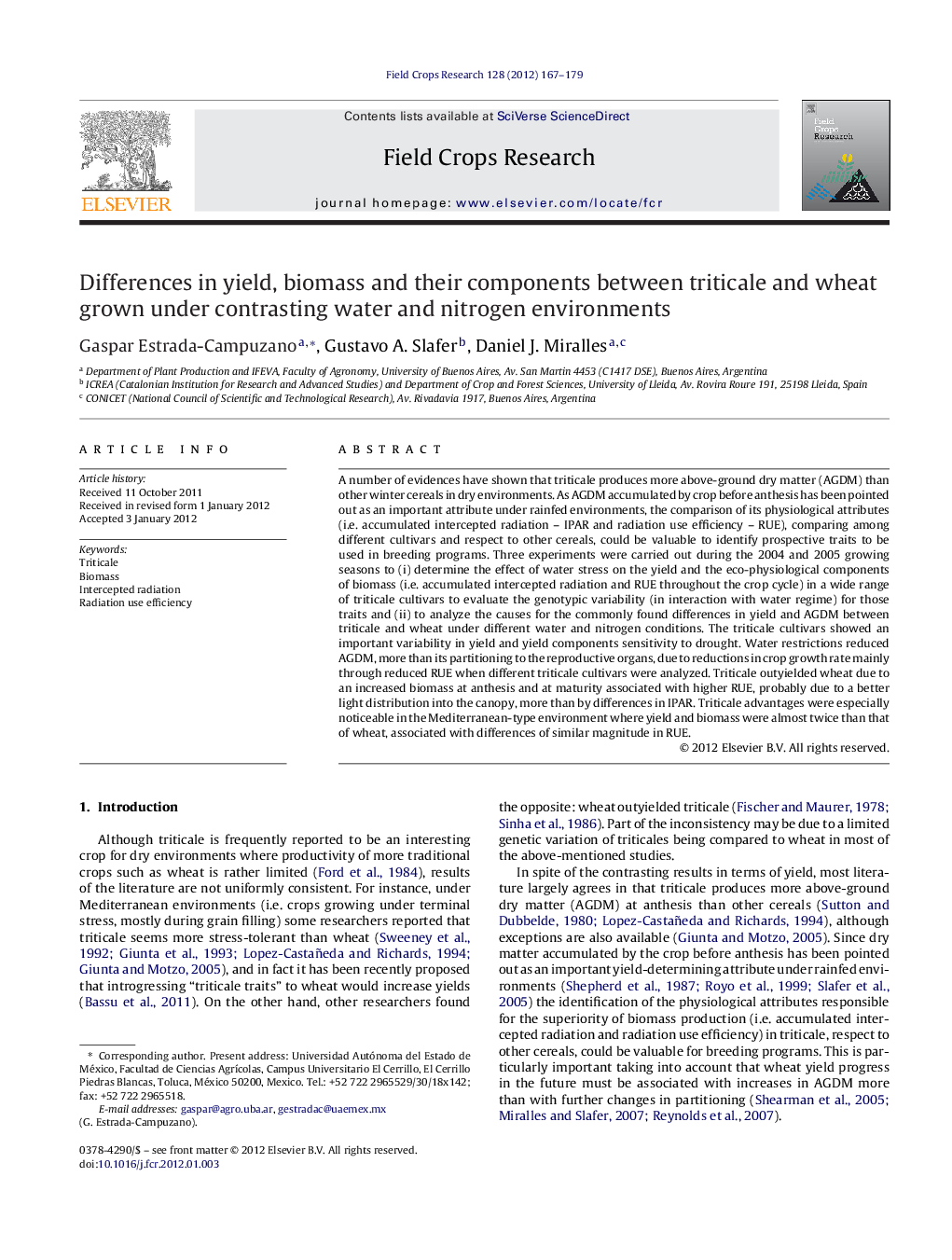| کد مقاله | کد نشریه | سال انتشار | مقاله انگلیسی | نسخه تمام متن |
|---|---|---|---|---|
| 4510667 | 1624735 | 2012 | 13 صفحه PDF | دانلود رایگان |

A number of evidences have shown that triticale produces more above-ground dry matter (AGDM) than other winter cereals in dry environments. As AGDM accumulated by crop before anthesis has been pointed out as an important attribute under rainfed environments, the comparison of its physiological attributes (i.e. accumulated intercepted radiation – IPAR and radiation use efficiency – RUE), comparing among different cultivars and respect to other cereals, could be valuable to identify prospective traits to be used in breeding programs. Three experiments were carried out during the 2004 and 2005 growing seasons to (i) determine the effect of water stress on the yield and the eco-physiological components of biomass (i.e. accumulated intercepted radiation and RUE throughout the crop cycle) in a wide range of triticale cultivars to evaluate the genotypic variability (in interaction with water regime) for those traits and (ii) to analyze the causes for the commonly found differences in yield and AGDM between triticale and wheat under different water and nitrogen conditions. The triticale cultivars showed an important variability in yield and yield components sensitivity to drought. Water restrictions reduced AGDM, more than its partitioning to the reproductive organs, due to reductions in crop growth rate mainly through reduced RUE when different triticale cultivars were analyzed. Triticale outyielded wheat due to an increased biomass at anthesis and at maturity associated with higher RUE, probably due to a better light distribution into the canopy, more than by differences in IPAR. Triticale advantages were especially noticeable in the Mediterranean-type environment where yield and biomass were almost twice than that of wheat, associated with differences of similar magnitude in RUE.
► We studied the variability in yield and biomass production of wheat and triticale under different water and nitrogen environments.
► Triticale outyielded wheat due to its higher biomass production at anthesis associated with higher RUE more than by differences in IPAR.
► Triticale outyielded wheat in all environments due to its constitutive higher number of grains m−2, as result of a higher number of grains spike−1 and spikelets per spike.
► The florets development within spikelets was quite similar between both species, particularly for proximal florets.
Journal: Field Crops Research - Volume 128, 14 March 2012, Pages 167–179